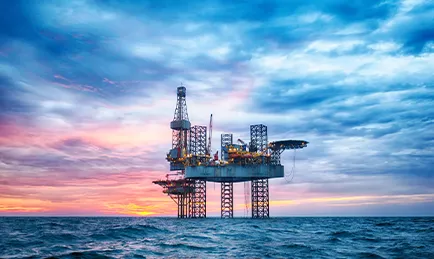- Afrikaans
- Albanian
- Amharic
- Arabic
- Armenian
- Azerbaijani
- Basque
- Belarusian
- Bengali
- Bosnian
- Bulgarian
- Catalan
- Cebuano
- Corsican
- Croatian
- Czech
- Danish
- Dutch
- English
- Esperanto
- Estonian
- Finnish
- French
- Frisian
- Galician
- Georgian
- German
- Greek
- Gujarati
- Haitian Creole
- hausa
- hawaiian
- Hebrew
- Hindi
- Miao
- Hungarian
- Icelandic
- igbo
- Indonesian
- irish
- Italian
- Japanese
- Javanese
- Kannada
- kazakh
- Khmer
- Rwandese
- Korean
- Kurdish
- Kyrgyz
- Lao
- Latin
- Latvian
- Lithuanian
- Luxembourgish
- Macedonian
- Malgashi
- Malay
- Malayalam
- Maltese
- Maori
- Marathi
- Mongolian
- Myanmar
- Nepali
- Norwegian
- Norwegian
- Occitan
- Pashto
- Persian
- Polish
- Portuguese
- Punjabi
- Romanian
- Russian
- Samoan
- Scottish Gaelic
- Serbian
- Sesotho
- Shona
- Sindhi
- Sinhala
- Slovak
- Slovenian
- Somali
- Spanish
- Sundanese
- Swahili
- Swedish
- Tagalog
- Tajik
- Tamil
- Tatar
- Telugu
- Thai
- Turkish
- Turkmen
- Ukrainian
- Urdu
- Uighur
- Uzbek
- Vietnamese
- Welsh
- Bantu
- Yiddish
- Yoruba
- Zulu
Well Casing Connection Coupling for Enhanced Oil and Gas Extraction Performance
Understanding Well Casing Couplings A Key Component in Drilling Operations
In the oil and gas industry, drilling operations require a multitude of specialized equipment and components. One of the critical elements in this setup is the well casing coupling, which plays an essential role in ensuring the structural integrity and safety of boreholes during drilling operations. This article aims to explore the significance of well casing couplings, their design features, and the various types used in drilling.
What is a Well Casing Coupling?
A well casing coupling is a threaded connector used to join sections of casing pipes in a borehole. Casing pipes serve multiple functions, including protecting the wellbore, preventing the collapse of the hole, isolating different pressure zones, and ensuring that groundwater is not contaminated during drilling. The couplings serve as the link between these sections, making it possible to extend the casing to the required depth efficiently.
Importance of Casing Couplings
The primary purpose of casing couplings is to provide a robust and leak-proof connection. This is paramount because any failure in the casing could lead to serious safety hazards, environmental risks, and significant financial losses. Properly installed casing couplings minimize the risks of well collapse, blowouts, and fluid migration between formations, which could compromise oil and gas production and damage valuable resources.
Furthermore, the strength and durability of the coupling are crucial—these components must withstand a variety of forces, including axial loads, torsional loads, and external pressures. In offshore drilling or other challenging environments, the reliability of these couplings is even more critical, as they operate under extreme conditions and potential hazards.
Design Features
Well casing couplings come in various designs and materials, tailored to meet specific requirements. Most commonly, they are made from high-strength steel to endure harsh drilling conditions and corrosion. The coupling sizes and thread types may vary depending on the casing size and the specific requirements of the drilling operation.
well casing coupling

One notable design feature is the threaded connection, which can be either API (American Petroleum Institute) or premium threads. API threads are standardized and widely used, while premium threads offer enhanced sealing capabilities and performance in high-pressure applications.
Types of Casing Couplings
There are several types of well casing couplings, each serving different operational needs
1. API Couplings These are standard couplings that meet API specifications. They provide a reliable option for most drilling operations and are widely recognized in the industry.
2. Premium Couplings Designed for high-pressure and high-temperature applications, premium couplings offer superior sealing and strength. They are often used in challenging environments such as deepwater drilling.
3. Full Bore Couplings These couplings have an inner diameter that is equal to the inner diameter of the casing pipes, allowing for unrestricted fluid flow. This design is essential in operations where it is crucial to minimize pressure drop and maximize production efficiency.
4. Specialty Couplings These couplings are designed for unique applications or environments, such as corrosive or extreme-temperature conditions. They can be customized to meet specific needs, enhancing their performance in challenging scenarios.
Conclusion
Well casing couplings are essential components of drilling operations, bridging the gaps between casing pipes while providing necessary support and integrity to the borehole. With advancements in material science and engineering, casing couplings continue to evolve, offering enhanced reliability and performance in a variety of drilling environments. Understanding their significance not only ensures safer and more efficient drilling operations but also protects valuable resources while minimizing environmental risks. As exploration and production demand increases, the role of these critical components will undoubtedly become even more pronounced in the oil and gas industry.
-
Tubing Pup Joints: Essential Components for Oil and Gas OperationsNewsJul.10,2025
-
Pup Joints: Essential Components for Reliable Drilling OperationsNewsJul.10,2025
-
Pipe Couplings: Connecting Your World EfficientlyNewsJul.10,2025
-
Mastering Oilfield Operations with Quality Tubing and CasingNewsJul.10,2025
-
High-Quality Casing Couplings for Every NeedNewsJul.10,2025
-
Boost Your Drilling Efficiency with Premium Crossover Tools & Seating NipplesNewsJul.10,2025







